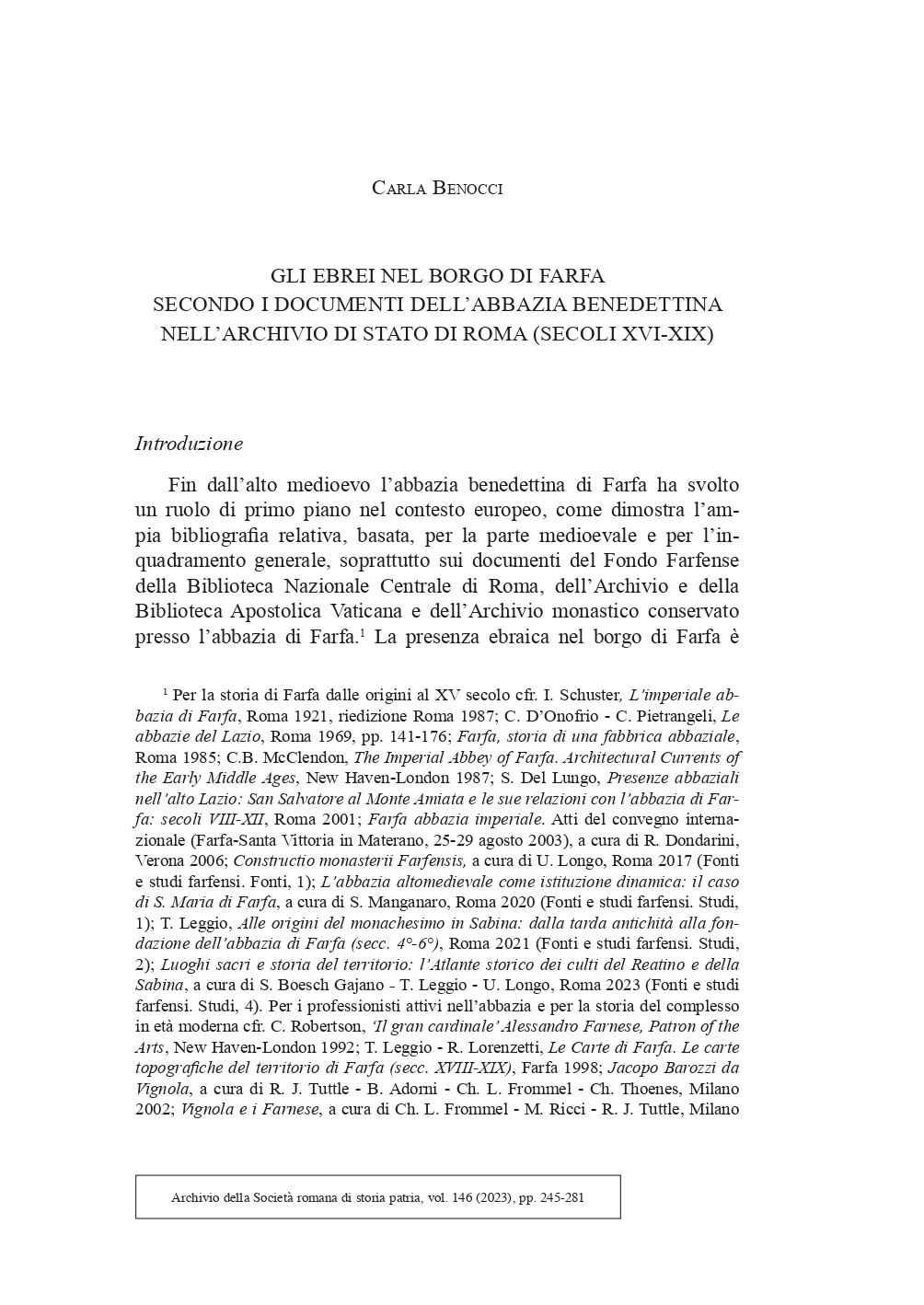Archivio della Società romana di storia patria vol. 146 (2023) – 9. Carla Benocci
6,00€
Codice DOI 10.61019/ASRSP_146_9
File formato PDF
Carla Benocci
Gli ebrei nel borgo di Farfa secondo i documenti dell’abbazia benedettina nell’Archivio di Stato di Roma (secoli XVI-XIX)
Come documentano gli atti conservati presso l’Archivio di Stato di Roma, il borgo di Farfa riveste un ruolo particolare in età moderna, sia per l’importanza commerciale sia per l’organizzazione messa in atto dai benedettini della potente abbazia, d’intesa con i cardinali commendatari Alessandro Farnese e Alessandro Peretti Montalto. Mentre in altre cittadine italiane si costruiscono ghetti o si individuano altre forme di separazione tra ebrei e cristiani, i benedettini adottano un’unica modalità contrattuale per tutti gli affittuari, mantenendo la proprietà delle botteghe fino al 1747; essi controllano il rispetto dei contratti e tutelano il buon andamento del mercato. Si crea così un concorso allo sviluppo del borgo commerciale tra tutti i protagonisti, monaci, mercanti e cardinali commendatari. Gli affittuari ebrei ampliano e migliorano il sito ottenuto; si dispongono su una strada da essi caratterizzata e ampliano la loro presenza sulle altre vie limitrofe, insieme a mercanti cristiani di varia provenienza, in un contesto esemplare di buon governo.
Jews in the village of Farfa according to the documents of the Benedictine abbey in the State Archives of Rome (16th-19th centuries)
Documents conserved in the State Archives of Rome demonstrate that the village of Farfa played a specific role in the early modern era, both for its commercial importance and for the organization put in place by the Benedictines of the powerful abbey, in agreement with the commendatory cardinals Alessandro Farnese and Alessandro Peretti Montalto. While other Italian towns saw the construction of ghettos or the establishment of other forms of separation between Jews and Christians, the Benedictines adopted a single contractual method for all tenants: maintaining ownership of the shops until 1747, they monitored compliance with contracts and safeguarded the good performance of the market. This situation created a competition among all the protagonists – monks, merchants and commendatory cardinals – for the development of the commercial village. Jewish tenants expanded and improved their leased properties, and, while settling primarily on a single street from which they expanded their presence into neighboring streets, they shared space with Christian merchants of various origins in an exemplary context of good governance.
Archivio della Società romana di storia patria, 146
dicembre 2023, pp. 37


